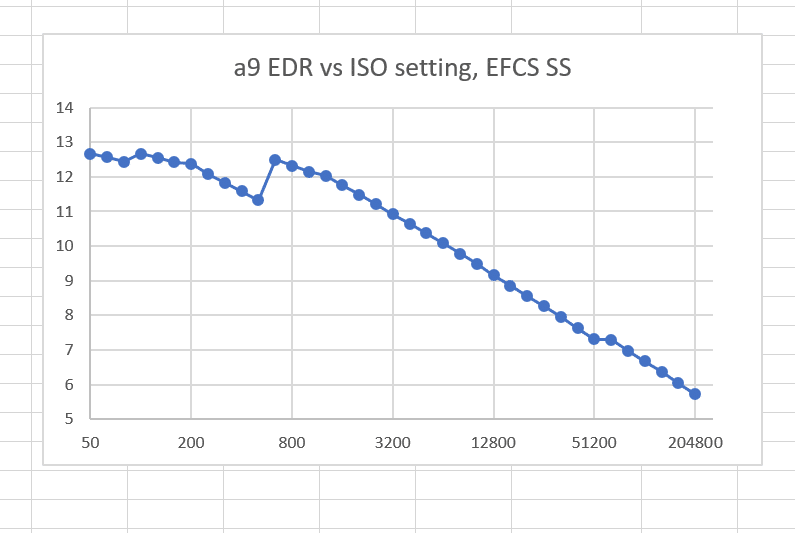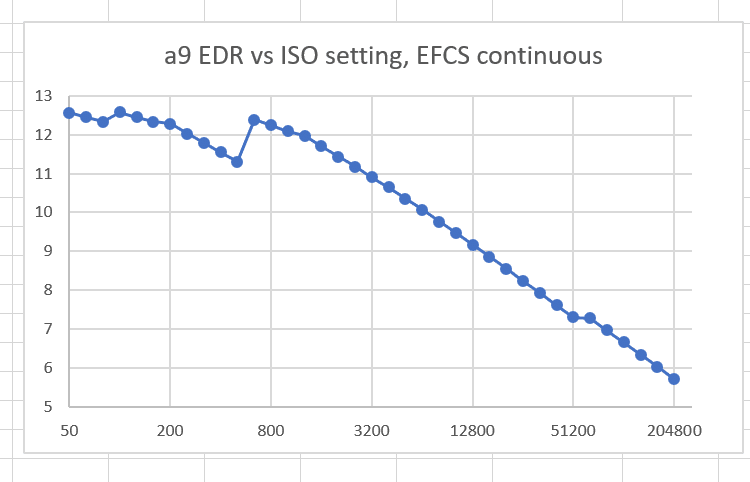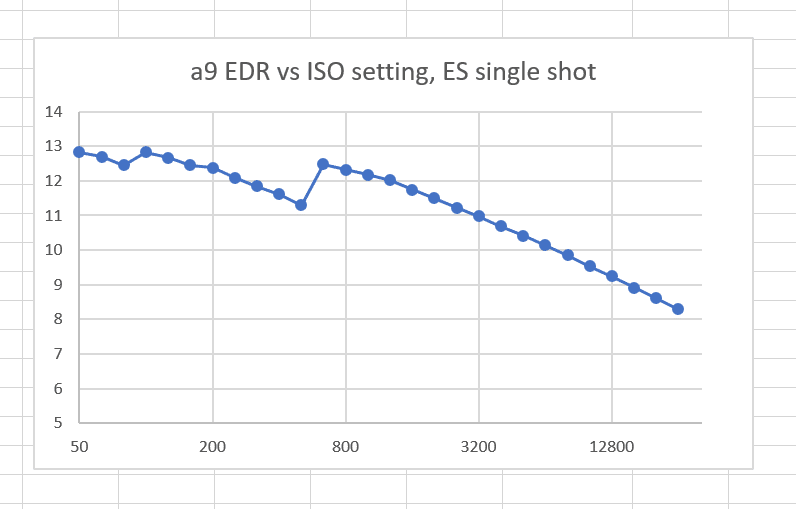This is the third in a series of posts on the Sony a9. The series starts here.
I made a series of dark field images with the raw format set to uncompressed, and the mechanical shutter set to electronic first curtain shutter (EFCS). When I used the continuous drive mode, I set the rate to low. I turned off all the lens corrections. And, although it shouldn’t matter when making exposures of he back of the body cap, I turned off IBIS, too. I looked at 400×400 crops in the center of the image. This is a worst-case place to look for sensors that are step-exposed in processing, like the a9 must be. It also may be a tough place to look for stacked sensors like the one in the a9.
I ran through all the ISO settings in each of the four modes, mechanical shutter in single shot mode, mechanical shutter in continuous mode, electronic shutter in single shot mode, electronic shutter in continuous mode. I’m presenting the results in the form of the ratio of a full-scale signal to the rms value of the noise. That’s called the engineering dynamic range (EDR).
EFCS on, in single shot drive mode:
A few thing to notice. The ISOs below 100 are achieved the same way as those in the a7x. I call them fake ISOs, although I sometime get grief for doing that. They do not actually reduce the sensitivity of the sensor, don’t buy you any reduced noise, and increase the probability of saturation. My advice is to ignore them.
You can also see that, from a read noise perspective, there is no reason to use the ISOs between 200 and 500. We’ll have more on that in future posts. I haven’t done spatial frequency analyses, but it loks like Sony is cooking the files above ISO 51200 in order to reduce noise.
In continuous mode, which, as we saw in the previous post, means we only have 12 bits precision:
The noise is slightly worse. I don’t think it’s enough to worry about.
With the electronic shutter on, and back to single shot drive mode:
That looks about the same, too.
Turning on the continuous drive mode (Bill Claff has pointed out the title below is wrong — it’s really electronic shutter, not EFCS):
Now we lose about half a stop at base ISO. You will note that in single shot mode, the electronic shutter actually has a slightly higher base-ISO EDR than with EFCS.
Good going, Sony!



Jack Hogan says
Interesting that the best eDR at base ISO appears to occur with the full electronic shutter on.
JimK says
Leakage current between the time the mechanical shutter closes and the time the sensor is read? Self-heating? Probably not; the ES captures were after the EFCS ones.